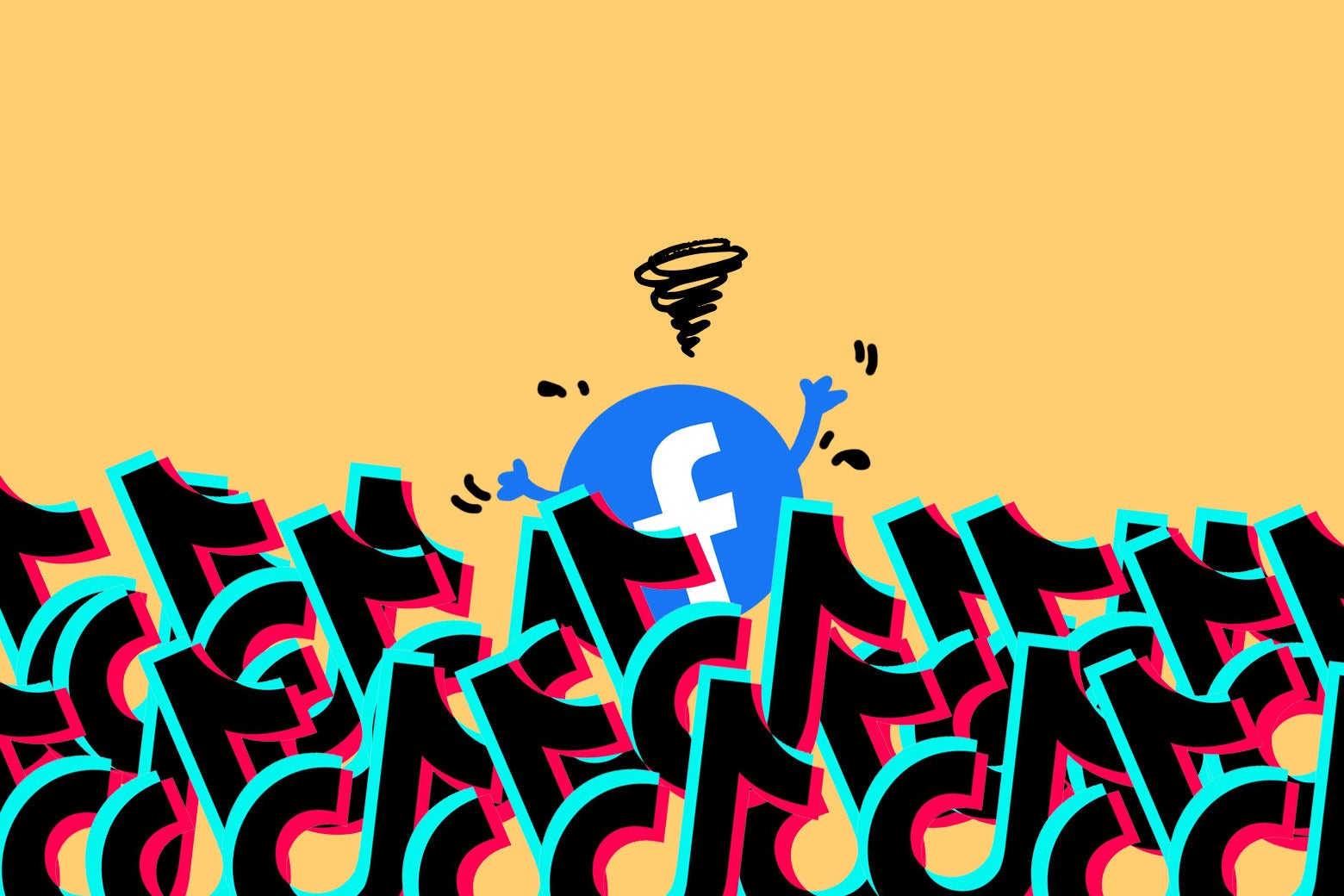

Facebook is changing the news feed again—this time to take on TikTok. Will it wo...
source link: https://slate.com/technology/2022/10/facebook-changes-newsfeed-tik-tok-tom-allison-interview.html?via=rss
Go to the source link to view the article. You can view the picture content, updated content and better typesetting reading experience. If the link is broken, please click the button below to view the snapshot at that time.

How Facebook Lost Ground to TikTok, and What It’s Doing About It
Users are sharing less. Young people aren’t signing up at all. What will it take to resuscitate the big blue app?

This article is from Big Technology, a newsletter by Alex Kantrowitz.
The Facebook survey looked bleak. According to internal research released by a whistleblower last year, young adults told the company that its main app was irrelevant, negative, and undifferentiated. They said it was for older people. And increasingly, they were right. The average Facebook user’s age jumped by more than five years between 2013 and 2021, opening the door for TikTok.
Now, as TikTok surges, Facebook is responding. The company has accepted that some of its core app’s fundamentals are off. That sometimes, the most “social” interactions with “media” happen in private message threads, not feeds. And that content from friends and family, while intriguing, can pale in comparison to content suggested by A.I. So Facebook is transforming itself to adapt.
“Relevance of content, or being irrelevant, or Facebook being cluttered, that’s really top of mind,” said Tom Alison, a top Meta executive who runs the core Facebook platform, in an interview this week. He has his work cut out for him.
Facebook came of age when discovery on the internet was limited. If you wanted to find something, you’d generally search for it, rather than it searching for you. The company’s original innovation was to connect you with friends and family who’d share articles, images, and videos you’d find interesting. It would push you content, in the order it thought you’d most like it, instead of making you look for it.
The old Facebook model had two key flaws, however: 1) Eventually, people grew tired of broadcasting, so sharing declined, and 2) the internet contained more interesting stuff than what first-degree connections recommended, making Facebook recommendations feel a bit dull.
As Facebook matured, YouTube and then TikTok took advantage of its flaws. They used A.I. to comb through billions of videos and recommend what people, personally, would find interesting. Then, when someone found something they liked, they’d share it via text—not feeds—with close friends. Many young people, coming online for the first time, skipped Facebook entirely in favor of these mediums. They did go to Facebook’s corporate siblings Instagram (for content) and WhatsApp (for sharing), but even as Meta continued to rake in fortunes, the “blue app” lost its luster.
After again pushing friends and family content to the fore a few years ago, Facebook has finally accepted the world has moved on. The news feed, it says once again, is changing. It’s still going to show you stuff from people you know. But in an attempt to reinvigorate its feed, it will show you content from elsewhere more often. It’s also going to split its feed into two, with a “Home” tab of Reels and Stories taking precedence.
Facebook’s move toward recommended content acknowledges that its fundamental innovation is no longer enough. “People feel like, gosh, I’m going to open the app; I know that there’s millions or billions of people on Facebook,” said Alison. “I want to see what Facebook and this huge set of people have for me.”
Facebook also seems ready to calibrate its feed differently. While it’s optimized for time spent and in-feed engagement in the past, Alison indicated that people share differently now. He seemed thrilled about the idea of people finding content they like on Facebook and discussing it, privately, in messages with their friends. “Is a post where somebody shares more valuable than a pretty in-depth discussion with a friend on a messaging thread?” Alison asked. “I’m not so sure that kind of calculation makes sense. I think people want to connect in a variety of ways.”
Facebook will thus add messaging back into its main app—no more compulsory hopping over to a separate Messenger app—hoping to inspire conversations about content people find in its feed. It’s also working to improve the quality of that content, announcing this week that people can adjust what they see in feed by marking ”show more” or “show less”. And when it measures success, Facebook isn’t only concerned about time spent, but how often people come back to its app.
The critical question for Facebook will now be whether it can keep its identity—or forge a new one—without turning into a cheap TikTok clone. That question is very open. (In one recent mishap, Instagram users revolted against the addition of more video and more content from unfamiliar users in their main feeds; Meta rolled back the changes.)
“We haven’t completely figured out the right way to integrate short-form video,” said Alison, referring to Meta’s Reels, which are very similar to TikToks. “It’s still a big kind of journey for us.” Getting it right will determine the future of the 2.9 billion-user app, beginning with how many of those billions decide to stick around.
Recommend
About Joyk
Aggregate valuable and interesting links.
Joyk means Joy of geeK
